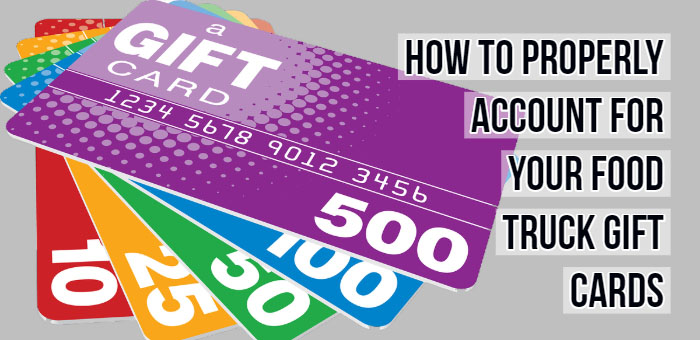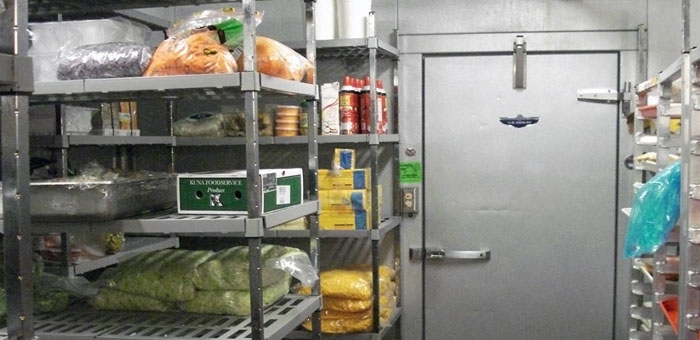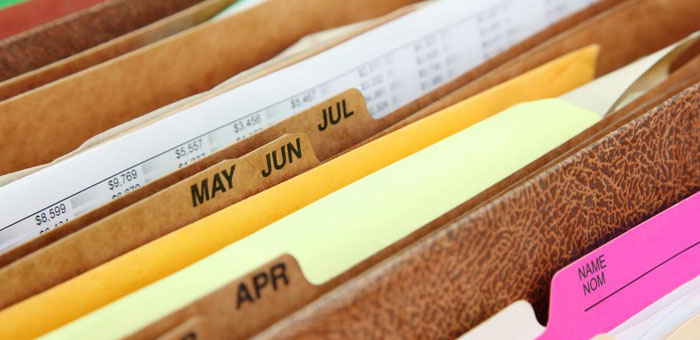Have you noticed that around every holiday restaurants and food trucks make a big push to sell gift cards? They’re wonderful as gifts or stocking stuffers and they’re easy to wrap. The recipient can use them when they want. Food truck gift cards are sold by vendors to customers to allow them to purchase their food in the future. The cards are sold for cash and, in effect, the customer is prepaying for the food. What’s not to like about a gift card?
Well, food truck owners should like them for other reasons. Especially, if they are lost they aren’t used. When a food truck sells a gift card, they receive the cash and they record a liability. By the way, this is about the best kind of liability you can have. You already have the cash to do with what you will.
Properly Accounting For Your Food Truck Gift Cards
Three stages in the life of food truck gift cards:
- Sale. The gift card is sold to the customer and the vendor has an obligation to supply them food or services in the future.
- Redemption. Customer redeems the gift card in return for food or service.
- Breakage. Some food truck gift cards are not redeemed and expire (referred to as breakage).
Gift Card Sales
Gift cards are sold to the customers, and the vendor must establish the liability for its obligation to supply the customers with food or services in the future. The essential accounting for gift cards is for the issuer to initially record them as a liability, and then as sales after the card is used.
Suppose the food truck sells gift cards for the amount of $50, the deferred revenue journal entries to record the sale are as follows:
| Account | Debit | Credit |
|---|---|---|
| Cash | 50 | |
| Gift card liability | 50 | |
| Total | 50 | 50 |
The technical term for this kind of liability is called unearned revenue. You’ve received the cash, you just haven’t provided the service yet.
Gift Card Redemption
When a food truck gift card is redeemed by a customer, the vendor must satisfy its obligation to supply the food or service and the liability is nullified. The revenue can now be recognized and matched to the corresponding cost of goods sold.
Suppose a customer redeems a gift card for the amount of $40, the accounting journal to record the gift card redemption is as follows:
| Account | Debit | Credit |
|---|---|---|
| Gift card liability | 40 | |
| Revenue | 40 | |
| Total | 40 | 40 |
The vendor has supplied the food or service to the customer and the revenue can now be recorded. The amount of $40 is transferred from the gift cards liability account (deferred revenue) in the balance sheet, to the revenue account in the income statement.
The company reports a liability equal to the amount of cash received, and promises to provide a product or service in the future. The company can put that cash to work now, and then use cash sometime in the future to satisfy their obligation. Well, that makes sense. But what if the food truck doesn’t have to provide a meal or service in the future? What if that liability is never satisfied?
Consumers can buy food truck gift cards for those on their holiday gift-giving list. Buy a gift card and give it to that special someone. They can then buy what they want, when they want. What do you do when someone loses a gift card? The vendor had recorded a liability, but since the card is lost, they don’t have to satisfy that liability. They just get to keep the cash. Now vendors doesn’t know when you lose a gift card, but they can estimate using historical information just how many gift cards are not going to be redeemed.
Gift Card Breakage
There is an actual term for this: card breakage. In the notes to their financial statements, they state the following. Deal with breakage or the gift cards will remain as a balance sheet liability of the truck indefinitely. In order to prevent this, the business can estimate the expected breakage, and release this amount to the income statement as revenue.
In the example above, the customer redeemed the amount of $40. This 40 reflects the 80% of the gift cards value the business expects customers to redeem and therefore the total gift cards value is estimated at 40/80% = 50. The remaining balance of 50-40 = 10 is the breakage (10/50 = 20%), which the business expects the customer not to redeem.
The business is now able to estimate the breakage revenue to be released proportionately as other gift card balances are redeemed by customers.
The accounting journal to reflect this is as follows:
| Account | Debit | Credit |
|---|---|---|
| Gift card liability | 10 | |
| Revenue | 10 | |
| Total | 10 | 10 |
In the above example, 40 was redeemed and the estimated breakage revenue, based on this redemption is 10. The revenue of 10 can now be recorded. This amount is transferred from the gift card liability account to the income statement revenue account.
If the food truck isn’t able to estimate the breakage amount, the revenue for the unused portion of the gift cards is recognized when the likelihood of the customer redeeming the gift card becomes remote.
I am familiar with a food truck where every holiday season they offer this deal. Buy five $20 gift cards and get a free $20 gift card. In other words, pay $100 and get $120 worth of gift cards.
How can they afford to give away $20 like that? Now we know they know exactly what they’re doing. Not only do they hope that those using gift cards will become regular customers and spend even more money in the future, they’ve also done some calculations and determined that some of that liability associated with the gift cards will become breakage in the future.
RELATED: 6 Accounting Equations To Know For Your Food Truck Business
The Bottom Line
For many food trucks, holidays throughout the year brings a bustle of promotions, catering gigs and gift card sales. Once the holidays are over and gift cards will soon be spent, if they haven’t already, food trucks must be sure they’re accounting for these gift cards properly.
Do you offer food truck gift cards? Share your thoughts on this topic in the comment section or social media. Facebook | Twitter
DISCLAIMER: Mobile Cuisine and its affiliates do not provide tax, legal or accounting advice. This material has been prepared for informational purposes only, and is not intended to provide, and should not be relied on for, tax, legal or accounting advice. You should consult your own tax, legal and accounting advisors before engaging in any transaction.




